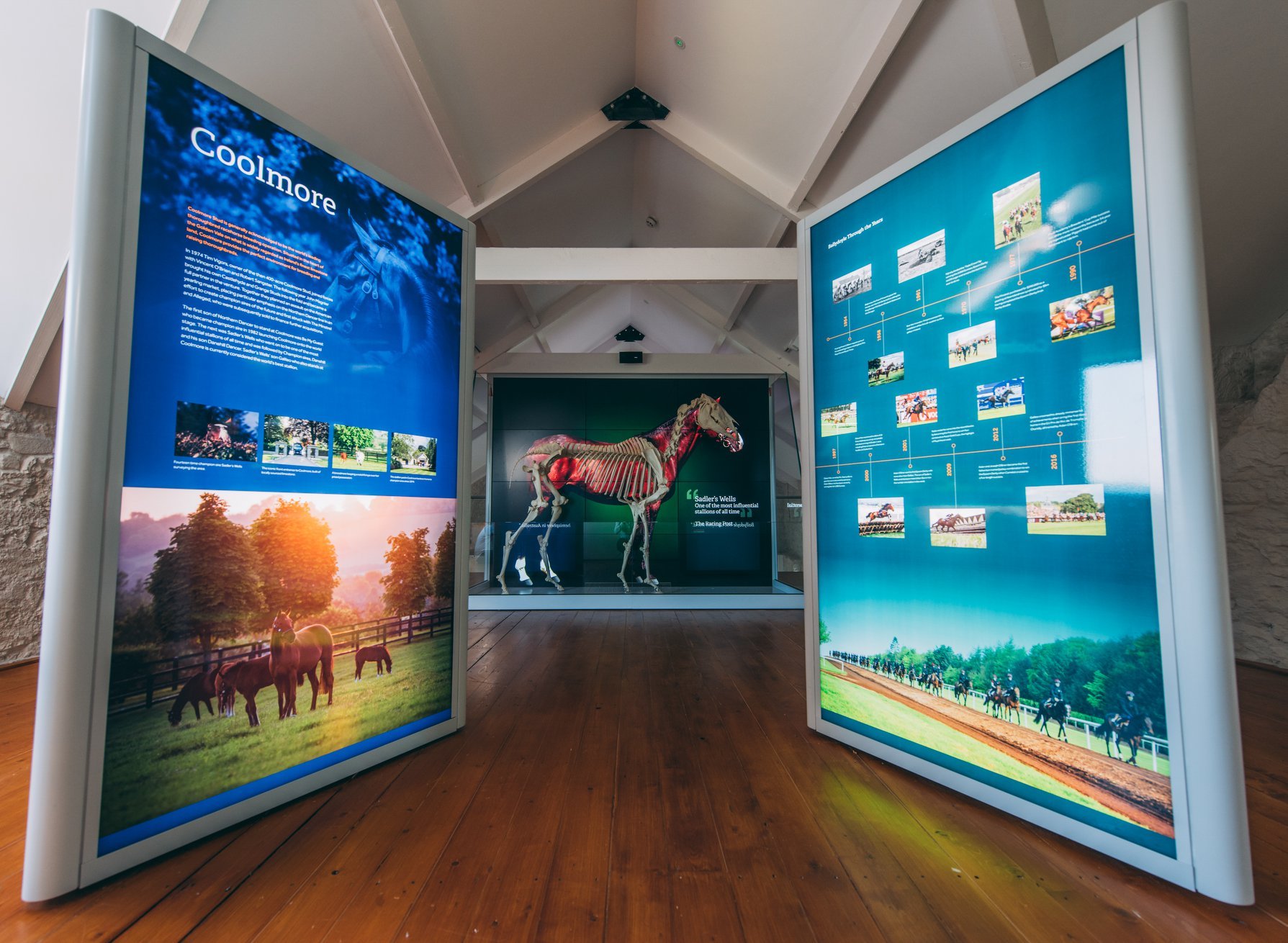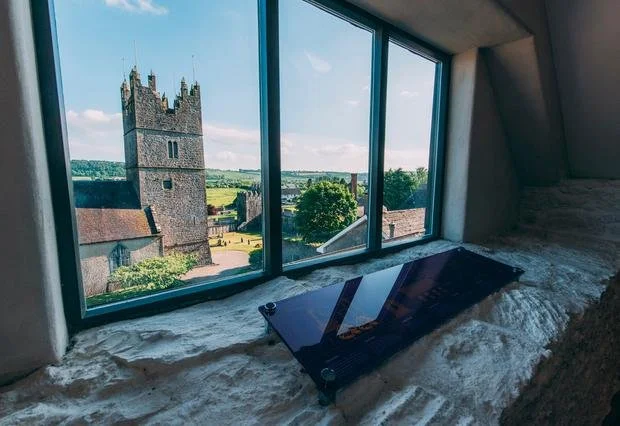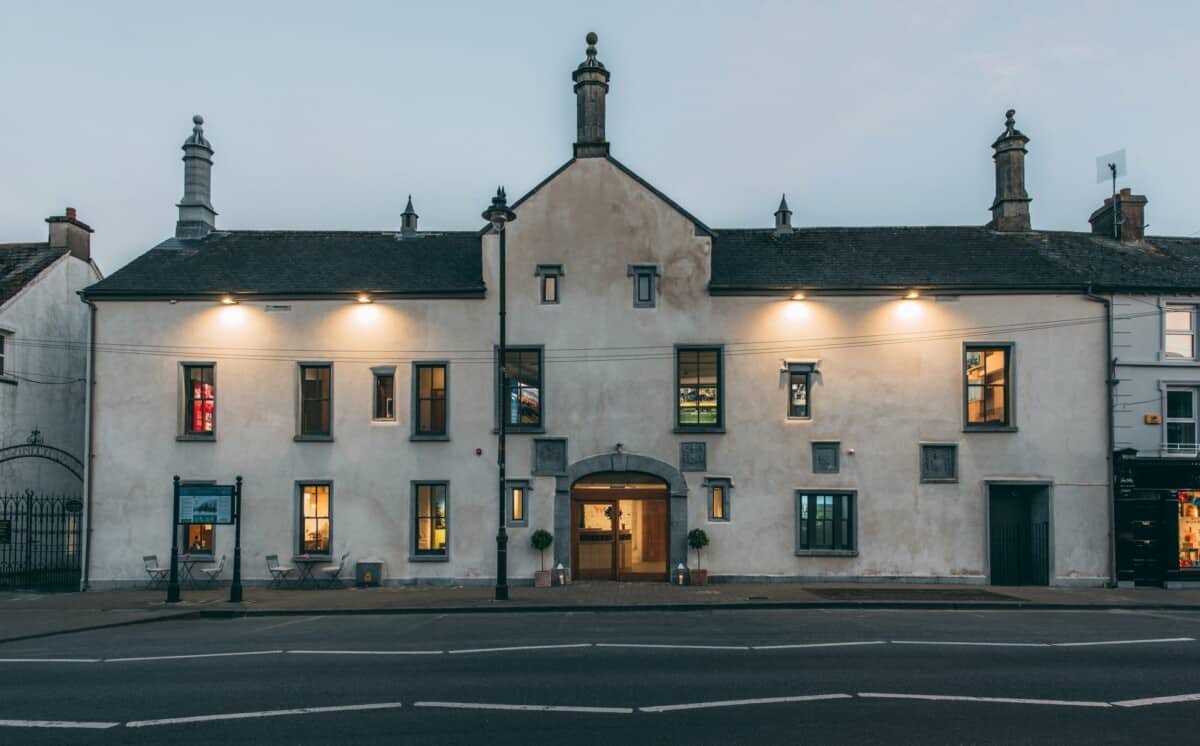About Us
The Museum
Located in the heart of the Golden Vale, the FHC Experience offers visitors the opportunity to discover the rich culture, heritage and history of the region. Part of Ireland’s Ancient East, this interactive experience examines the relationship between the people, the land and the horse revealing how they are all inextricably linked.
Spread out over two floors within C17th Tholsel building the interactive nature of the exhibition makes it an enjoyable and informative experience for all ages.
Opening Hours:
Tuesday to Saturday
9:30am to 5:00pm
Friday 8:00am to 4:00pm
The entire building is Wheelchair Accessible.
The Building History
The building, which today houses the FHC Experience, began its life as an almshouse in the early 1600s. Its construction was paid for by the Everard family, who were one of the most prominent families in Fethard at the time. At their height they owned over 80 houses and 4 castles.
Over the years, the building has been re-purposed many times. It housed the Fethard Corporation until its abolition in 1840. They were succeeded by the Town Commissioners who ran Fethard affairs until 1898.
In the 20th Century, it became Fethard’s Town Hall. Every local has a recollection of attending a dance, competing in a badminton tournament or taking to the stage during its days as a theatre space. It also served as a fire station, library and marketplace during this period. The first Country Market in Ireland, founded by Olivia Hughes, took place here in 1947 and continues to do so every Friday morning.
A building survey completed by Kilkenny Archaeology prior to its restoration, uncovered many original features of the building including three original fireplaces on the first floor. We’ll be happy to point them out to you during your visit to the Fethard Horse Country Experience.
Restoration
By the 1980s, the Tholsel together with much of the medieval built fabric of Fethard was falling into terminal disrepair and towards the end of that decade discussions began around a restoration project. This became the enormous plan to restore the battlements of the entire Town Wall circuit of over a kilometre. The group ‘Friends of Fethard’ spearheaded the works with the support of the Heritage Council of Ireland. John Magnier famously donated his senatorial salary to the project. Lord Killanin leant his prestige and expertise. Against all expectations, the Friends of Fethard succeeded in restoring about a third of the wall – along the picturesque river frontage and including a rebuild of the entire upper section of the Mural Tower. The celebrated architect, David Newman Johnson, oversaw. The Friends of Fethard’s plans to restore both Edmond’s Castle and Templars’ Castle ran into the problem of funding constraints and so work stopped.
At the same time, The Heritage Council published Tadgh O’Keeffe’s Archaeological and Historical Survey of Fethard – which was the first detailed gazetteer of the architectural treasures the town contained.
After a lull during the 1990s, O’Keeffe, now a lecturer at Trinity College Dublin, published his Royal Irish Academy Historic Towns Atlas (No. 13), devoted to Fethard. It was a huge coup for Fethard to find itself featured amongst a select portfolio of towns like Kilkenny (No. 10), Dublin (No.11) and Belfast (No.12).
In 2003 South Tipperary County Council commissioned The Dublin Civic Trust to carry out a detailed analysis of The Tholsel with a view to securing its future. In 2007, The Heritage Council came back on board with a Public Realm Plan for Fethard (with the Paul Hogarth Company) in tandem with Oxford Archaeology’s Fethard Historic Town Walls Conservation & Management Plan.
The Tholsel’s importance was acknowledged in all these important documents. KPMG were commissioned by the Heritage Council to undertake detailed feasibility studies for three historic buildings whose potential was unfulfilled. These were: The Tholsel, Fethard, The Clock Tower Youghal, and St. Lawrence’s Gate Drogheda. The potential was clear.
At the suggestion of South Tipperary County Council, the Fethard Business and Tourism Group came together under the auspices of the Community Council, to make all of this a reality. Architect Michael O’Boyle undertook a conservation analysis of the Tholsel with a view to its development as a tourism venue. It was Michael who first posited that the building had once been adorned with eight gables – a contention that was thrillingly confirmed during the building works. Principal Architect Grainne Shaffrey put the plans through with great skill, and Architect Ken Hennessy with Pat Tallis Builders painstakingly and immaculately restored the Tholsel. Kilkenny Archaeology supervised the digging and wrote up the finds.
With the indispensable support of Coolmore, Event Communications – an incredible team – brought the interactive experience to life so that the Tholsel (and Fethard) are now part of Failte Ireland’s brand new initiative ‘Ireland’s Ancient East.’ The Tholsel has finally put Fethard on the tourist map after a long but determined journey from abstract analysis to physical reality.
Tipperary County Council, South Tipperary Development Company, Ireland’s Ancient East, Coolmore, Andrew Lloyd Webber Foundation, private donors and the local community were all essential supporters of the Fethard Horse Country Experience to get it to where it is today.



